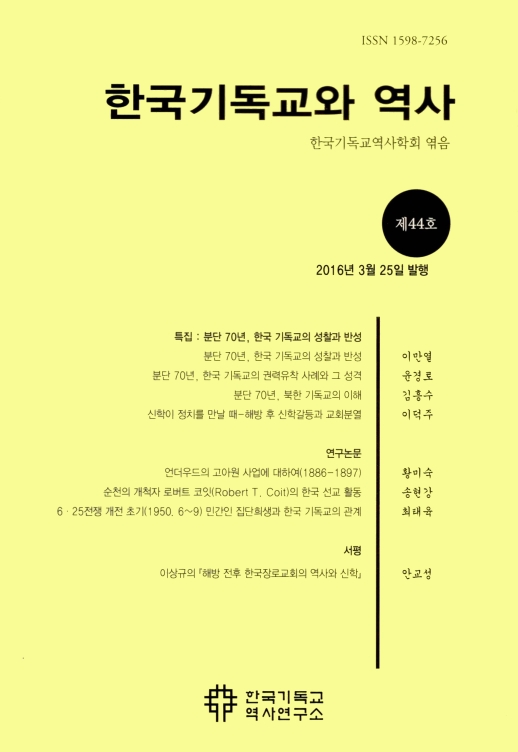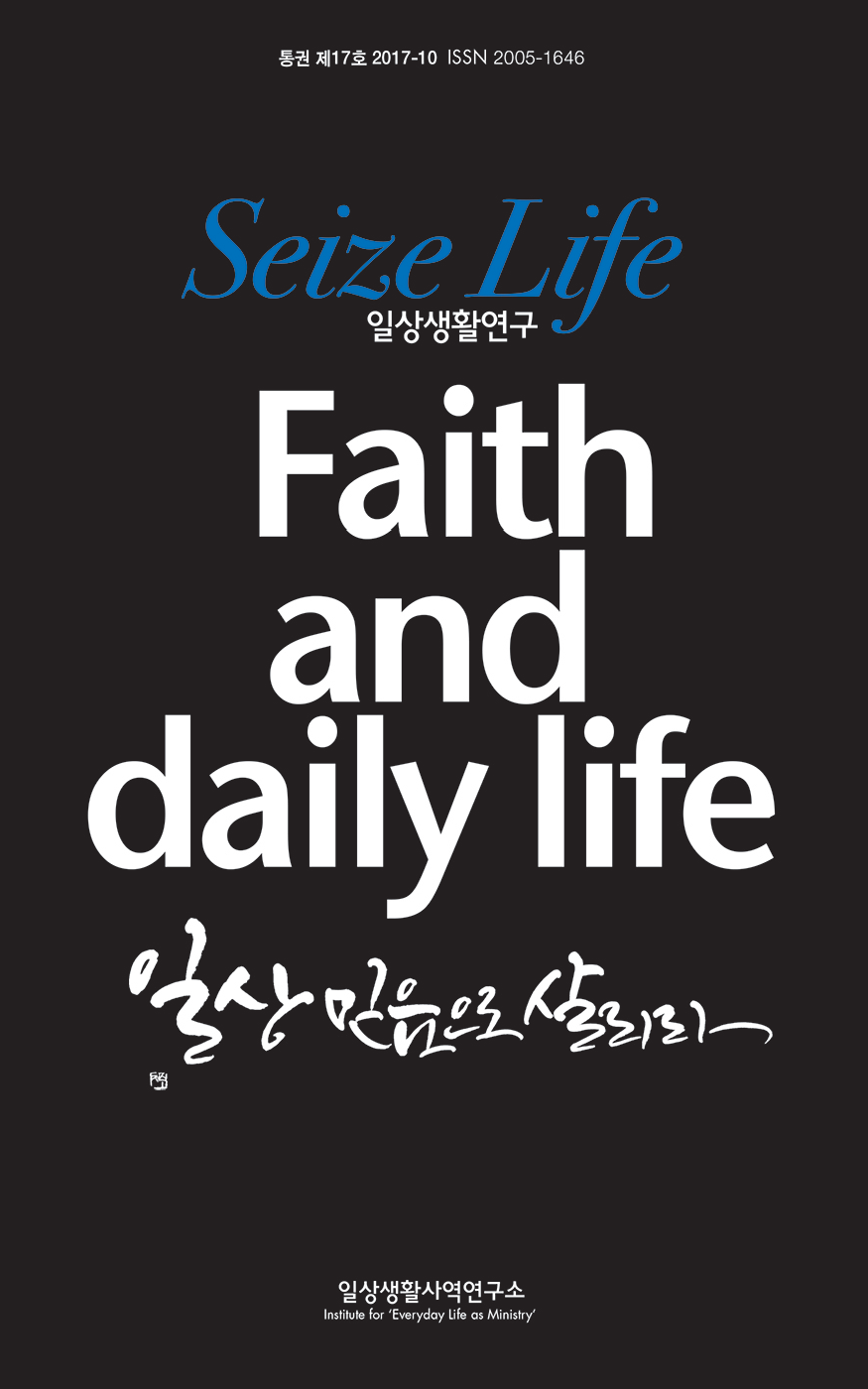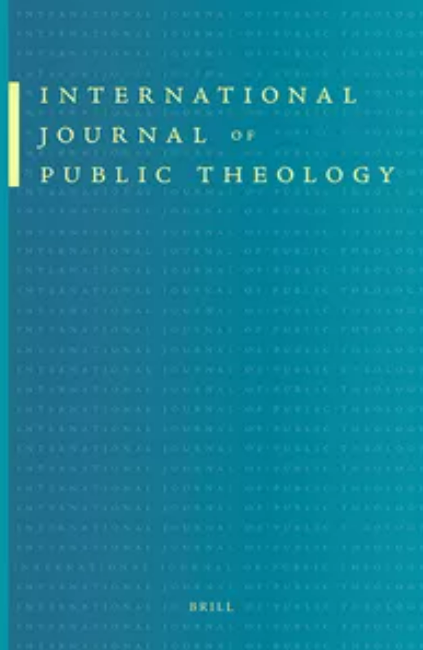해방 후 한국교회, 특히 한국장로교회가 겪은 신학갈등과 교회분열의 배경과 원인은 해방 전, 일제강점기 형성된 한국교회 신학의 ‘다양성’에서 찾아볼 수 있다. 그 신학의 다양성은 19세기말 한국 선교에 착수한 후 해방 후까지 한국교회 성장과 발전에 기여한 외국인 선교사들의 소속했던 교단과 선교회의 다양한 신앙과 신학 전통에서 비롯되었다. 여기에 선교사 개개인의 신앙 고백과 신학적 경향에 따라 일제강점기 한국교회가 경험한 신학은 극보수 근본주의 신학으로부터 급진 자유주의 신학에 이르기까지 다양하였다. 또한 선교사들은 자신이 속한 교단의 ‘교파’ 신학을 한국교회에 소개, 주입하였는데 그것은 각 교파교회마다 설립한 교단 신학교 교육을 통해 더욱 심화되었다. 그러면서도 선교사들은 ‘복음주의’라는 신학개념을 통해 (개신교회 안에서) 교파주의를 극복하려는 초교파 연합, 일치운동을 추진하였다. 그 결과 한국교회는 선교사들의 신학을 통해 ‘구별’과 ‘연합’라는 서로 상반되면서도 연대할 수 있는 신학 기능을 경험하였다. 해방 후 한국교회는 일제 말기 교회 지도자들의 오류와 실수로 인해 잘못된 역사를 청산해야 할 과제를 안고 있었다. 그러기 위해서 우선 잘못된 역사에 대한 반성과 회개, 그리고 거기에 피해자의 용서와 관용이 필요하였는데 한국교회는 두 가지 모두 실패하였다. 그 결과 해방과 함께 한국교회는 분열을 경험하였고 특히 장로교회는 ‘출옥성도’들을 중심으로 한 재건교회와 고신파의 분열이 이루어졌다. 그 과정에서 ‘출옥성도’ 한상동의 민족의식과 교회재건 의지, 그리고 박윤선과 박형룡의 ‘구평양신학교’ 보수 칼빈주의 ‘정통신학’ 전통을 복원하려는 의지가 모여서 부산에서 고려신학교가 설립되었고 서울의 조선신학교와 구별되는 보수주의 신학교로 자리매김을 하였다. 해방 당시 유일했던 ‘교단직영’ 신학교였던 조선신학교는 처음(1940년) 출발할 때부터 ‘반(反) 근본주의/선교사/평양신학교 신학’, ‘신학의 세계화’, ‘학문의 자유’를 추구하였다. 그런 배경에서 성서비평설과 신정통주의 신학 등 서구의 진보적 신학을 ‘자유롭게’ 강의하였다. 그러나 그런 신학교육이 축자영감설과 성경무오설을 신조로 여기던 보수 신학생들에게 반발을 일으켜 1947년 ‘조신신학교 51인 학생 진정서사건’이 일어났다. 예장/기장 분열 과정을 거치면서 자유주의(근대주의) 신학 비판가로서, 그리고 보수주의 선교사와 평양신학교를 통해 구축된 ‘사도적 정통신학’의 ‘적통’(嫡統) 계승자로서 박형룡은 ‘절대적’ 위상을 확립했다. 특히 보수진영에서 박형룡은 ‘지존’(至尊)에 가까운 영향력을 행사하였다. 물론 그에 대한 반발도 적지 않았다. 그런 상황에서 1957년 ‘총회신학교 3천만환 사건’이 터졌고 위기에 처한 박형룡을 구명하려는 운동이 ‘복음동지회’(NAE)를 중심으로 추진되었다. 그러나 박형룡의 독주를 비판하는 세력도 만만치 않았다. 해방 후 조직된 한국기독교연합회(NCC)와 세계교회협의회(WCC)의 에큐메니칼운동에 참여하는 인사들이 중심이 되었다. 결국 신학교 교수와 이사회, 교단 지도부는 복음동지회측과 에큐메니칼측으로 양분되었고 복음동지회측은 세계교회협의회의 자유주의 신학과 용공주의 노선, 초교파 단일교회 설립의도 등 신학적인 문제를 거론하며 에큐메니칼측을 ‘비정통’으로 비난하였다. 서로 상대방을 용납하지 않는 양측의 교권투쟁은 1959년 제44회 총회를 파행으로 이끌었고 결국 예장은 통합측(에큐메니칼측, 연동측)과 합동측(복음동지회측, 승동측)으로 분열되었다. 예장 합동/통합 분열은 교권투쟁 과정에서 신학적 이해 차이와 갈등이 정치적 도구로 이용된 경우라 할 수 있다.
After liberation from the Japanese colonialism, the Korean Church, especially the Presbyterian Church of Korea has suffered inner theological conflicts and a several church divisions. We can find background and causes of the conflict in diversity of theology formed during the Japanese occupation of Korea. And the diversity of theology had originated mainly in various personal beliefs and theologies, ranging from the ultra conservative fundamentalism to the radical liberal theology, of the foreign missionaries who contributed to the growth and development of the Korean Church. In addition to this, the missionaries, belonging to the denominational church and mission board, tried to build up denominational Churches in Korea by training the native preachers in their denominational theological schools. As a result, theological tendency of the presbyterian pastors who had studied in the Presbyterian Theological Seminary in Pyongyang were conservative or fundamental, while that of the methodist pastors who had been trained in the Methodist Theological Seminary in Seoul were progressive or liberal. And yet the missionaries, who had experienced the interdenominational revival meetings in homeland, also tried to promote ecumenical and cooperative union movement in mission field, to match the theological concept of "evangelical" for overcoming exclusive denominationalism. As a result, the Korean Christian, by the foreign missionaries, had experienced a variety of theology that could be the cause of division or integration of the Church. The Korean Church, with the liberation, confronted a task to liquidate the distorted history of surrendering and adaptation to Japanese imperialistic religious policy and non-religious activities of the Church leaders, especially committing of worship the Japanese Shino shrine, in the late Japanese colonial period. There must be sincere reflection and repentance for that wrong history for reconciliation and building up new-born Church after liberation. The Korean Presbyterian Church, however, failed to solve such challenges successfully so had to experience division of the Restoration Presbyterian Church in 1946 and the Kosin Presbyterian Church in 1950, both of which were founded by the suffered Christians who were put into the jail for their anti-shinto shrine movement under Japanese imperialism. And leaders of the Kosin Presbyterian Church also established a new Korea Theological Seminary(later Kosin University) in Pusan as their own denominational seminary in the notion of restoration and succession of the Presbyterian Theological Seminary in Pyongyang which had been closed down by Japanese government for it’s anti-shinto shrine policy in 1938. They invited Dr. Hyung Ryong Park, the former professor of Pyongyang Seminary and the most representative fundamental theologian in Korea, as the principal of new founded seminary. At the time of liberation, the only denominational seminary of the Korean Presbyterian Church was the Chosen Theological Seminary(later Hansin University) in Seoul which was founded in 1940 by some liberal theologians such as Chai Choon Kim who was critical to the missionary-dominated fundamental theological education of the late Pyongyang seminary. So many students who had received very conservative religious education from their Pyongyang seminary alumni pastors in local Churches, could not accept the liberal theological education in the Chosen Theological Seminary, especially such as Biblical criticism and neo-orthodox theology which were perceived as heretical theology in terms of Pyongyang Seminary theology based on Biblical literal inspiration and infallibility. At last in 1947, 51 students of Chosen Seminary filed a petition at the General Assembly of the Korean Presbyterian Church asking to verify theology of Chosen Seminary. From then began the verification and criticism on theology of professor Chai Choon Kim by the conservative Church leaders and theologians such as Hyung Ryong Park who leaved Korea Theological Seminary in Pusan and founded a new Presbyterian Theological Seminary in Seoul. And the Korean presbyterian Church, after long controversy and accusation between the opposites and supporters of Professor Kim and Chosen Seminary, was again divided into the Christian Presbyterian Church(later the Presbyterian Church in the Republic of Korea) and the Protestant Presbyterian Church(later the Presbyterian Church of Korea, PCK) in 1953. It was second division of Korean Presbyterian Church after liberation and, from then, liberal theology and conservative theology had begun to sharpen each other around their own denominational seminaries. In the late of 1950’, there occurred third division of Korean Presbyterian Church in the PCK. It was provided a clue in a case of appropriation of school finance, in 1957 by Dr. Hyung Ryong Park the principal of the Presbyterian Seminary newly founded by the General Assembly of the PCK. That case had embraced a fatal blow to Dr. Park who was admired as the only successor and tutelar of the apostolic and orthodox theology against theological modernism and liberalism. In this situation, Seminary professors and Church leaders of PCK had been split into opposition and support of Dr. Park. And the supporters of Dr. Park, in conjunction with the National Association of Evangelicals(NAE), the American united organization of the conservative Churches, criticized the opposites for their favor of the ecumenical movement by the World Christian Council(WCC) and the National Council of Churches in Korea(NCCK) with charging on their theological tendency of liberalism and acceptation of communism. And at last in 1959 both sides, after two years of fiery debate and quarrel, organized General Assemblies of PCK separately.







